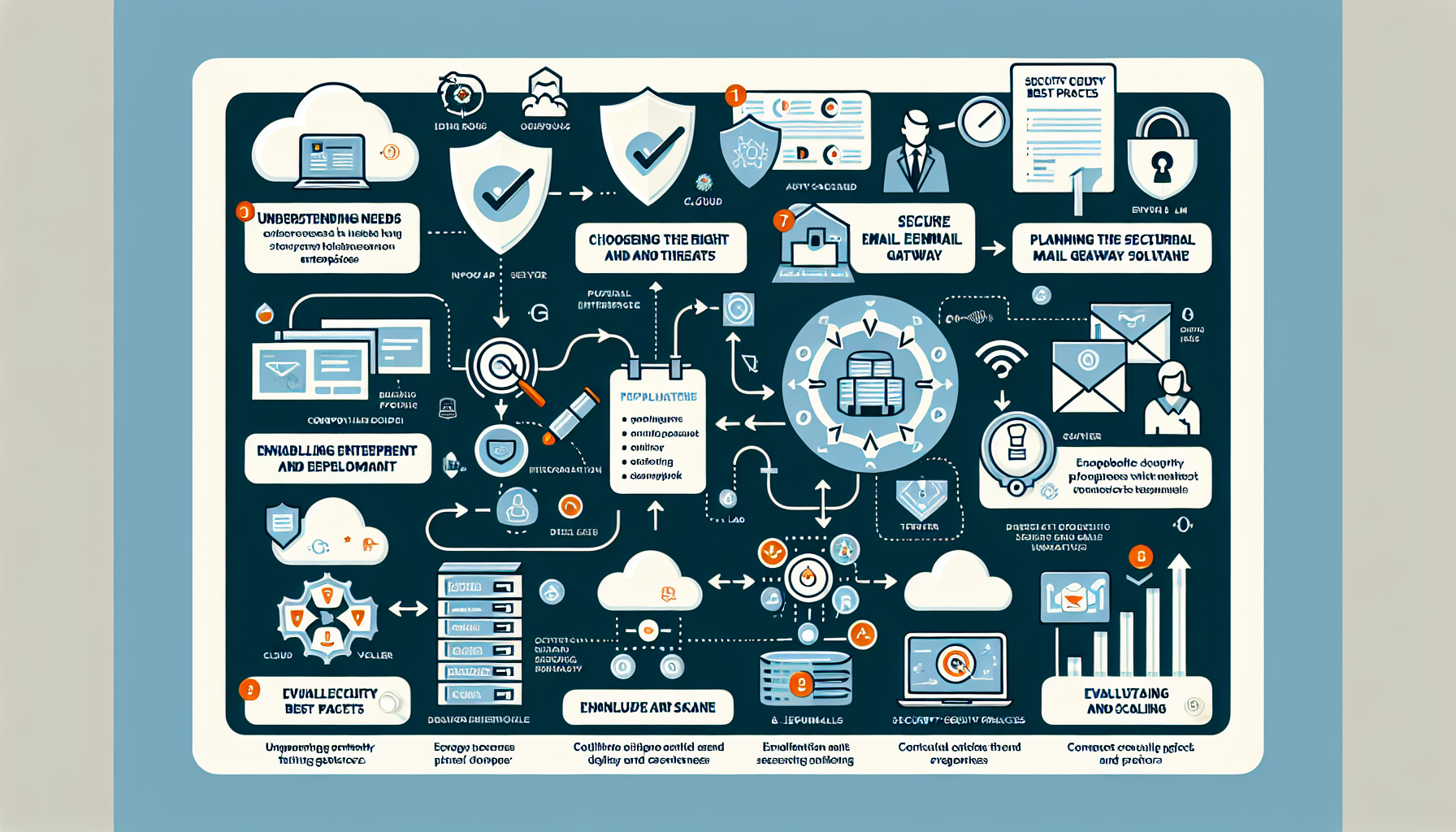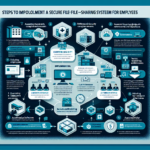Implementing a secure email gateway (SEG) for an enterprise is essential to protect your organization’s email communication from threats like phishing, malware, spam, and data breaches. Below is a step-by-step guide to implementing a secure email gateway:
1. Understand Enterprise Needs and Threats
- Assess Risks: Identify the specific email security risks your organization faces, such as phishing, BEC (Business Email Compromise), or advanced persistent threats (APTs).
- Compliance Requirements: Understand compliance requirements (e.g., GDPR, HIPAA, PCI DSS) that mandate email security and data protection.
- Scalability: Consider the size of your organization, email volume, and future growth to ensure the solution scales accordingly.
2. Choose the Right Secure Email Gateway Solution
- Deployment Options:
- Cloud-based: SaaS solutions hosted in the cloud (e.g., Proofpoint, Mimecast, Microsoft Defender for Office 365).
- On-premise: Hardware or software appliances hosted in your data center.
- Hybrid: A combination of both for flexibility and redundancy.
- Features to Look For:
- Anti-malware and anti-phishing: Real-time detection and prevention of malicious emails.
- Spam filtering: Accurate filtering to reduce false positives and negatives.
- Data Loss Prevention (DLP): Prevent sensitive data from leaving your organization.
- Encryption: Ensure secure communication for sensitive emails.
- Sandboxing: Analyze suspicious attachments in an isolated environment.
- Integration with SIEM/SOAR: For centralized monitoring and automated response.
- AI/ML-based Detection: To detect zero-day threats and advanced attacks.
3. Plan the Deployment
- DNS Configuration: Plan changes to your DNS (MX records) to route emails through the SEG.
- Testing Environment: Set up a pilot or test environment to validate the solution before full deployment.
- Integration Needs:
- Ensure compatibility with your existing email systems (e.g., Microsoft 365, Google Workspace, or on-premise Exchange).
- Integrate with your identity management solution (e.g., Active Directory, Azure AD) for user authentication.
- End-User Training: Educate employees about the new system and best practices for email security.
4. Implement the Secure Email Gateway
- Deploy the Solution:
- Set up the gateway in line with your email flow architecture (inbound and outbound emails).
- Configure the DNS MX records to route emails through the SEG.
- Policy Configuration:
- Set up anti-spam, anti-phishing, and malware detection policies.
- Define content filtering rules to block unwanted file types (e.g., .exe, .zip) and suspicious links.
- Enable DLP policies to monitor sensitive information (e.g., credit card numbers, Social Security Numbers).
- Configure email encryption for specific types of emails.
- Quarantine Management:
- Set up quarantine rules for emails flagged as suspicious and provide end-users with a self-service portal if needed.
- Whitelisting/Blacklisting:
- Define trusted domains and block known malicious senders.
5. Monitor and Optimize
- Logging and Reporting:
- Enable detailed logging to track email flow, blocked threats, and policy violations.
- Use dashboards and reports to monitor the performance of the SEG.
- Threat Intelligence Feeds:
- Subscribe to updated threat feeds from your SEG vendor to stay ahead of emerging threats.
- Tuning Policies:
- Fine-tune spam filtering thresholds and policies based on your organization’s needs to reduce false positives/negatives.
- Regular Updates:
- Keep the SEG software/firmware updated to patch vulnerabilities and enhance capabilities.
6. Enable Incident Response and Recovery
- Integration with SIEM/SOAR Tools:
- Integrate the SEG with your Security Information and Event Management (SIEM) or Security Orchestration, Automation, and Response (SOAR) system for centralized monitoring and incident response.
- Incident Response Plan:
- Define clear steps for investigating and mitigating email-based security incidents.
- Backup and Recovery:
- Ensure your email system is backed up as part of your overall IT backup strategy. Regularly test recovery processes.
7. Conduct Regular Audits and Security Awareness
- Email Security Audits:
- Periodically audit the performance of the SEG and ensure policies align with evolving threats and business needs.
- User Awareness Training:
- Provide ongoing training to employees to recognize phishing and other email threats.
8. Evaluate and Scale
- Performance Metrics:
- Track key metrics like the number of blocked threats, false positives, and user-reported phishing incidents.
- Scalability:
- Regularly evaluate the SEG’s ability to handle email volume as your organization grows.
Popular Secure Email Gateway Vendors
- Proofpoint
- Mimecast
- Cisco Email Security (IronPort)
- Barracuda Email Security Gateway
- Microsoft Defender for Office 365
- Sophos Email
- Symantec Email Security.cloud
- Fortinet FortiMail
By implementing a secure email gateway with the steps above, you can significantly reduce email-borne threats and protect sensitive enterprise data. Always stay proactive in maintaining and updating the system to adapt to the evolving threat landscape.



